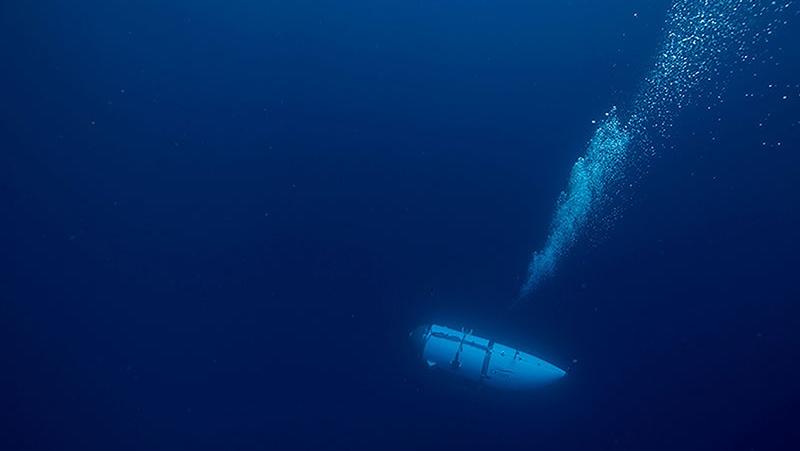
Officials have revealed that a submersible, en route to the Titanic, has gone missing and may have less than 40 to 41 hours of oxygen remaining. The search operation, conducted off the coast of Newfoundland, is ongoing.
In a briefing held in Boston on Tuesday, the U.S. Coast Guard provided an update to the media regarding the mission to locate the OceanGate-operated passenger submersible.
Capt. Jamie Frederick of the U.S. Coast Guard addressed the reporters, emphasizing the complexity of the search effort, which involves multiple agencies possessing expertise in the subject matter and specialized equipment. “Despite extensive search endeavors conducted thus far, we have yet to achieve any significant findings,” Capt. Frederick stated.
The submersible, referred to as Titan, was last observed in the early hours of Sunday morning after it was deployed from a vessel named the Polar Prince. The expedition, commencing in St. John’s, N.L., experienced a loss of communication with the surface teams approximately one hour and 45 minutes into the mission.
The search operation is being led by the U.S. Coast Guard, receiving support from the Canadian Coast Guard vessel Kopit Hopson 1752, and aerial assistance from a Royal Canadian Air Force Aurora aircraft stationed at 14 Wing Greenwood.
Given the limited oxygen supply aboard the submersible, time is of the essence in the ongoing search.
Here is the current information available regarding the missing submersible:
Among the five passengers aboard the submersible are notable individuals such as Hamish Harding, a billionaire and explorer, Paul-Henry (PH) Nargeolet, a French explorer, Shahzada Dawood, and his son Suleman, who belong to a prominent family in Pakistan. Additionally, according to Reuters, OceanGate CEO Stockton Rush is also among the passengers.
In a Facebook post on Saturday, Harding shared, “Yesterday, we departed from St. Johns, Newfoundland, Canada, and our plan is to commence dive operations at approximately 4 am tomorrow morning.” Harding further mentioned that the submersible’s team includes renowned explorers, some of whom have conducted over 30 dives to the RMS Titanic since the 1980s, with PH Nargeolet being one of them.
OceanGate Inc., an American company operating privately, specializes in offering deep ocean exploration experiences for tourism purposes.
According to the company’s official website, their remarkable submersible called Titan, designed to accommodate up to five individuals, possesses the capability to descend to impressive depths of 4,000 meters. To put it into perspective, this depth is approximately 7.2 times taller than the renowned CN Tower.
Situated approximately 600 kilometers southeast of Newfoundland in the North Atlantic Ocean lies the tragic resting place of the Titanic, which met its fate in 1912. OceanGate conducts expeditions to this historical wreck, providing passengers with the opportunity to witness the site firsthand. However, the cost of such a remarkable voyage to the wreckage amounts to approximately C$300,000 per passenger.
The Titan submersible itself is constructed using a combination of carbon fiber and titanium materials, resulting in a sturdy and reliable vessel. With a length measuring 6.7 meters, the submersible showcases impressive engineering.
It’s worth noting that submersibles like the Titan are deployed from a mother ship, which acts as a launching platform. In contrast, submarines possess the capability to navigate between ports independently, thanks to their own propulsion systems.

